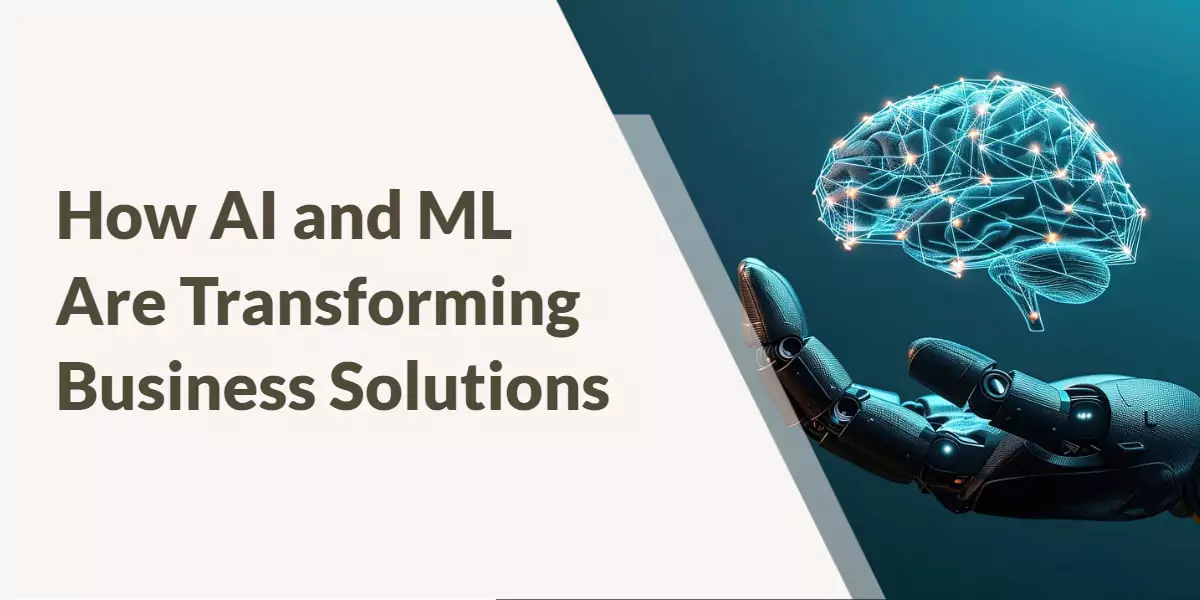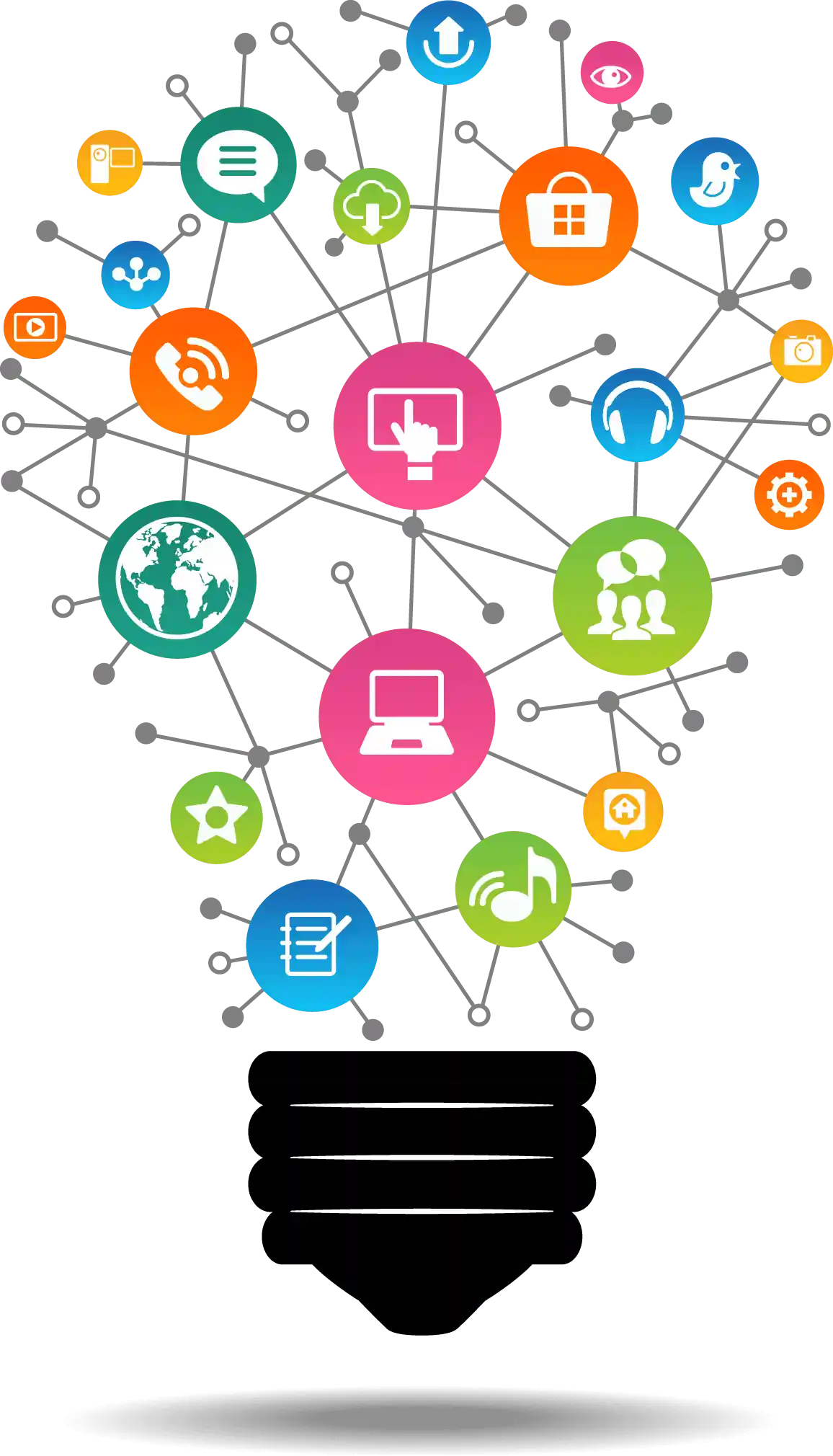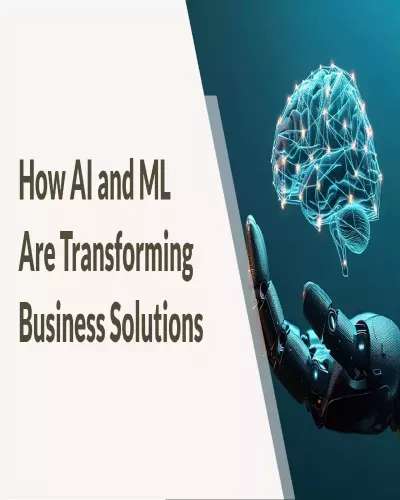Programming 19 June 2024
How AI and ML Are Transforming Business Solutions

Artificial Intelligence (AI) and Machine Learning (ML) are driving significant changes in the business world. These technologies are not just buzzwords but pivotal tools that are reshaping how companies operate, make decisions, and interact with customers. Here’s an in-depth look at how AI and ML are transforming business solutions.
Introduction to AI and Machine Learning in Business
AI refers to the development of computer systems that can perform tasks typically requiring human intelligence, such as understanding natural language, recognizing patterns, and making decisions. Machine Learning, a subset of AI, involves training algorithms to learn from and make predictions based on data. Together, AI and ML are revolutionizing various aspects of business, from automating routine tasks to providing valuable insights for strategic decisions.
- Artificial Intelligence (AI):
Broad field encompassing various technologies that simulate human intelligence. - Machine Learning (ML):
Subfield of AI focused on developing algorithms that allow computers to learn from data.
Key Benefits of AI and Machine Learning for Companies
AI and ML offer a multitude of benefits that can significantly impact a company’s performance and competitiveness.
- Increased Efficiency:
Automation of repetitive tasks such as data entry, scheduling, and customer service allows employees to focus on more strategic activities. For instance, AI-powered software can handle hundreds of customer queries simultaneously, reducing the need for human intervention. - Enhanced Decision-Making:
AI tools analyze vast amounts of data to provide actionable insights, helping businesses make informed decisions. Predictive analytics, powered by ML algorithms, can forecast trends and customer behavior, enabling proactive strategies. - Cost Savings:
By automating processes and optimizing operations, businesses can reduce labor costs and minimize errors. AI systems can also identify inefficiencies and suggest improvements, leading to cost reductions. - Personalization:
AI and ML enable businesses to deliver personalized experiences. For example, e-commerce platforms use AI to recommend products based on previous purchases and browsing history, enhancing customer satisfaction and increasing sales.
Real-World Examples of AI Transforming Business Solutions
AI and ML are already making a significant impact across various industries. Here are some real-world examples:
- Retail:
AI-driven recommendation engines analyze customer data to suggest products, increasing cross-selling and upselling opportunities. For example, Amazon’s recommendation system uses AI to suggest items based on browsing history and past purchases. - Finance:
Machine Learning algorithms detect fraudulent activities by analyzing transaction patterns. Companies like PayPal and Mastercard use AI to identify and prevent fraudulent transactions in real-time. - Healthcare:
AI assists in diagnosing diseases by analyzing medical images and patient data. Tools like IBM Watson Health help doctors identify potential health issues and recommend treatments based on vast medical datasets. - Manufacturing:
AI-powered predictive maintenance systems monitor equipment performance and predict failures before they occur, reducing downtime and maintenance costs.
Let's create something great together.
Your vision and our expertise can make a big impact.
How AI Enhances Decision-Making and Efficiency
AI enhances decision-making by providing insights derived from complex data analyses. Machine Learning algorithms identify patterns and trends that are not immediately apparent to human analysts.
- Data Analysis:
AI tools process and analyze large datasets quickly, providing actionable insights that help businesses make strategic decisions. For instance, AI can analyze sales data to identify the most profitable products and customer segments. - Predictive Analytics:
Machine Learning models predict future outcomes based on historical data. Businesses can use these predictions to plan inventory, forecast demand, and optimize marketing strategies. - Process Automation:
AI automates routine tasks such as report generation and data entry, increasing efficiency and freeing up time for more valuable work.
Machine Learning’s Role in Predictive Analytics
Machine Learning plays a crucial role in predictive analytics by leveraging historical data to forecast future trends and behaviors.
- Forecasting Trends:
ML algorithms analyze past sales data to predict future sales trends. This helps businesses plan inventory, allocate resources, and set marketing strategies. - Customer Behavior:
Machine Learning models can predict customer preferences and behaviors based on past interactions. This enables companies to tailor their marketing efforts and improve customer retention. - Risk Management:
ML algorithms assess potential risks by analyzing historical data and identifying patterns associated with risk factors. This helps businesses mitigate risks and make informed decisions.
AI-Driven Automation: Streamlining Business Operations
AI-driven automation enhances business operations by streamlining processes and reducing the need for manual intervention.
- Customer Service:
AI-powered chatbots and virtual assistants handle customer inquiries and provide support 24/7. This reduces wait times and improves customer satisfaction. - Supply Chain Management:
AI optimizes supply chain operations by predicting demand, managing inventory, and automating logistics. For example, AI can forecast demand for products, helping companies maintain optimal inventory levels. - Financial Operations:
AI automates financial tasks such as invoice processing, expense management, and financial reporting. This reduces errors and speeds up financial operations.
The Impact of AI on Customer Experience
AI significantly enhances customer experience by personalizing interactions and providing timely support.
- Personalization:
AI analyzes customer data to deliver personalized recommendations and offers. For example, Netflix uses AI to recommend shows and movies based on viewing history. - Customer Support:
AI chatbots provide instant assistance, resolving issues quickly and efficiently. This improves response times and customer satisfaction. - Engagement:
AI tools analyze customer feedback and sentiment to tailor marketing messages and promotions, increasing engagement and loyalty.
Transform Your Vision into Reality with Us.
Challenges in Implementing AI and Machine Learning
While AI and ML offer numerous benefits, businesses may face challenges in their implementation:
- Data Privacy:
Ensuring that customer data is protected and used responsibly is a major concern. Businesses must comply with data protection regulations and implement robust security measures. - Integration:
Integrating AI and ML systems with existing technologies can be complex and require significant effort. Businesses need to ensure compatibility and smooth integration. - Skills Gap:
There is a shortage of skilled professionals with expertise in AI and ML. Companies may need to invest in training or hiring specialized talent to manage these technologies effectively. - Cost:
The initial investment in AI and ML technologies can be high. Businesses need to evaluate the potential return on investment and ensure that the benefits outweigh the costs.
Future Trends in AI and Machine Learning for Business
The future of AI and ML holds exciting possibilities for businesses:
- Advanced Automation:
Expect more sophisticated automation tools that can handle complex tasks and improve efficiency even further. - Ethical AI:
There will be a greater focus on developing ethical AI practices that ensure fairness, transparency, and accountability. - Enhanced Personalization:
AI will enable even more personalized customer experiences, with tailored recommendations and interactions based on deeper insights. - AI in New Industries:
AI and ML will continue to expand into new industries, driving innovation and creating new opportunities.
Getting Started with AI and Machine Learning for Your Business
To successfully integrate AI and ML into your business:
- Identify Needs:
Determine the specific areas where AI and ML can add value. This could be in customer service, data analysis, or process automation. - Start Small:
Begin with pilot projects to test the technology and evaluate its impact before scaling up. - Invest in Training:
Ensure that your team has the necessary skills to manage and leverage AI and ML technologies effectively. - Choose the Right Tools:
Select AI and ML tools that align with your business goals and integrate well with your existing systems. - Monitor and Evaluate:
Continuously monitor the performance of AI and ML systems and make adjustments as needed to optimize their effectiveness.
Conclusion
AI and Machine Learning are transforming business solutions by enhancing efficiency, decision-making, and customer experiences. While challenges exist, the potential benefits make these technologies essential for modern businesses. Embracing AI and ML can lead to significant improvements and a competitive edge in the marketplace.
FAQ
Frequently asked questions (FAQs) about JBcodeapp cover custom
websites, app development, design, AI, hiring, and digital marketing..
AI (Artificial Intelligence) involves developing systems that mimic human intelligence, such as understanding language and recognizing patterns. Machine Learning (ML) is a subset of AI that focuses on training algorithms to learn from and make predictions based on data. Together, they help businesses automate tasks, enhance decision-making, and improve customer interactions.
They enhance efficiency by automating tasks, improve decision-making through data analysis, and personalize customer experiences, leading to cost savings and competitive advantages.
AI analyzes large datasets to uncover patterns and trends, providing actionable insights that help businesses make more informed decisions.
AI personalizes interactions and provides instant support, enhancing customer satisfaction with tailored recommendations and quick responses.
Start by identifying areas for AI and ML, testing with pilot projects, investing in training, choosing the right tools, and monitoring performance.












